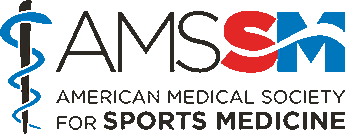|
CHOOSING WISELY: AVOID PERFORMING PLAIN X-RAYS IN INSTANCES OF FACIAL TRAUMA [Back] Choosing Wisely® is an initiative of the American Board of Internal Medicine and is supported by multiple medical societies, including the American Medical Society for Sports Medicine. Each society was asked to contribute five diagnostic tests or treatments that both physicians and patients shoulder question. The highlight this issue is the American Society of Plastic Surgeons’ “number 4” recommendation: Avoid performing plain X-Rays in instances of facial trauma. In the United States, over 150,000 patients present to the emergency department with facial trauma every year. Many of these patients are evaluated by trauma teams or emergency physicians with trauma protocols for evaluating injury. The same injuries can affect athletes. These injuries are common to many athletes in both collision and non-collision sports. An athlete can be injured in contact with another player, the ground, or with athletic equipment. Evaluating these injuries in the clinical setting has been controversial in the past. Aside from a thorough history taking and physical examination, there has been debate as to what imaging is most appropriate. Imaging is often required to detect the presence of any bony injury. Presently, most trauma centers have easy access to maxillofacial computed tomography (CT). It is the most sensitive test to detect a break in the facial bone structure (fracture). This means it has the lowest chance to miss finding a broken bone. Previously, many physicians have used x-rays as a screening tool to identify injuries to the face. The drawbacks of using x-rays for facial injuries are multiple. Not only do x-rays miss many bony injuries, they will need to be followed by a CT scan to fully evaluate the extent of an injury if it is seen on an x-ray. This exposes patients to increased cost and unnecessary radiation. X-rays have been shown to not improve quality of care. Alternatively, the advantages of a CT scan include the ability to define the complexity of a fracture, three-dimensional reconstruction to help identify fractures and plan for surgery, and allows for a more complete diagnostic evaluation. Instead of an x-ray, experts recommend physical exam as a screening tool to determine which patients need to have CT imaging. If a physician sees something concerning on examination of a patient, the first step should be to obtain a CT scan to evaluate the facial bones. If the patient is seen in a clinic setting and there is concern for a fracture of the face, there is still no benefit to obtaining an x-ray. This patient should be referred to the emergency department for evaluation if necessary. There are still some uses for x-rays in the setting of a facial injury. If a physician is concerned about an isolated injury to the jaw or teeth, x-ray still has a role. In this setting, a CT scan is not necessary as plain x-ray has a low miss rate for these types of fractures. For facial injuries, the current expert recommendations for evaluation of someone with a facial injury is to perform a thorough physical exam. If a more serious facial injury is suspected other than an isolated jaw fracture, the first imaging that should be performed is a CT scan of the facial bones. AMSSM Member Authors Category: [Back] |

